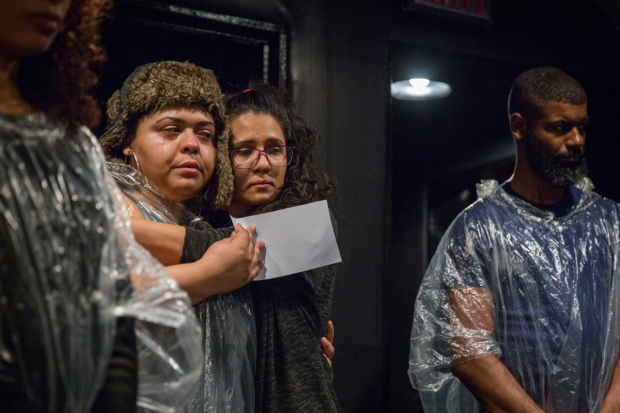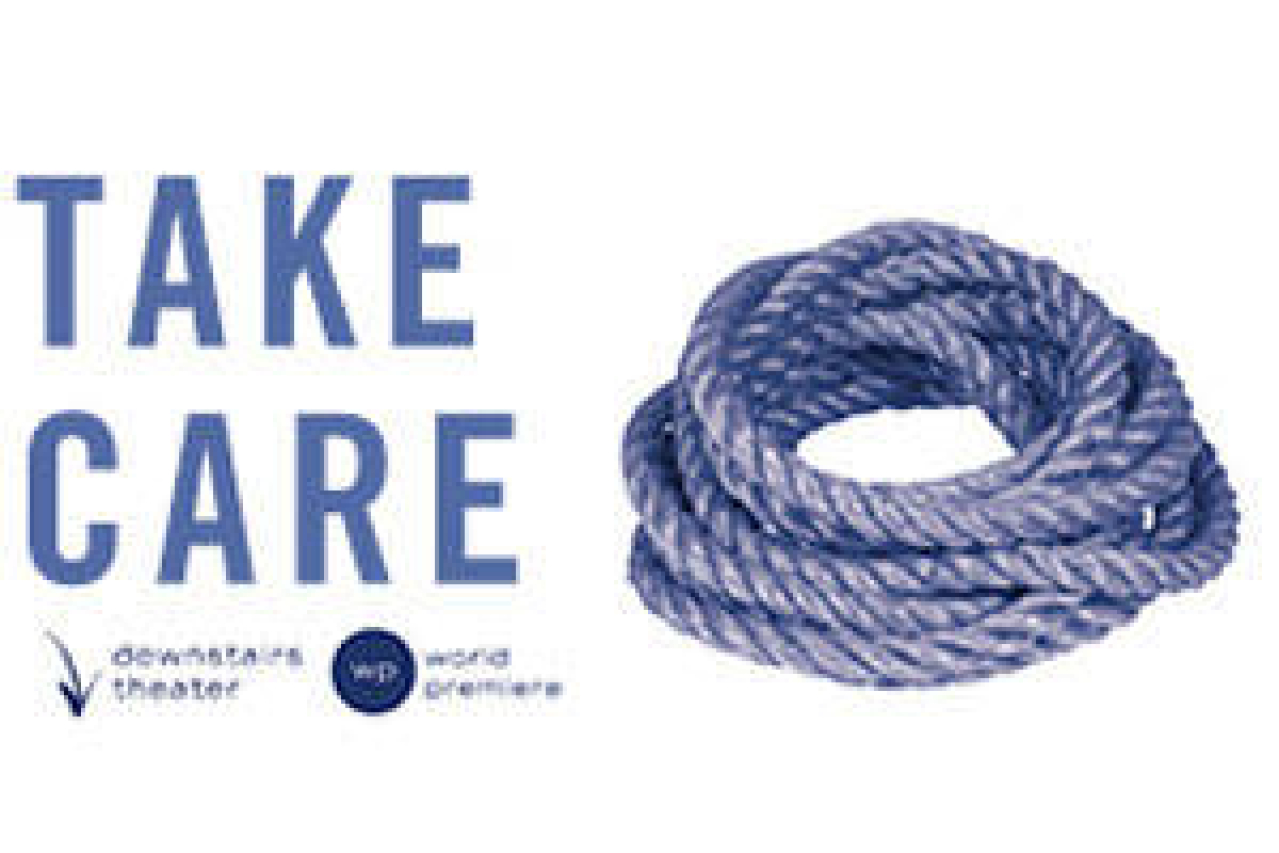Niegel Smith Is Building Off-Off-Broadway Community as Flea's New Artistic Director
Niegel Smith describes Take Care, his new show now running at the Flea, as "a piece of performance art [that] comes out of the lens of visual arts and collage making." As such, the production is meant to show the intersections of disparate themes and images. And in this case, Smith is looking for the junction between the "pressing global concerns" of "climate change and the value of brown bodies."
Both thematically and in its creation, Take Care is based on the idea of community, the building of which is one of Smith's main focuses as the Flea's new artistic director. In fact, Smith told TheaterMania that one of the reasons he took the job was because of the theater's company of volunteer pre-professional actors, the Bats. That troupe, he says, "is the beginning of all of the kinds of communities" that he hopes the Flea will be able to serve while he's at the helm.

What excites you about taking over the artistic direction of the Flea?
At the core of everything we do at the Flea is our resident acting company, the Bats, and they are this real mix of young people who are getting their start in the theater community. So I'm curious about…giving them the best platform. One of the things that I love about the Flea is that we devote an incredible amount of resources to them and to making sure their work gets reviewed and that they continue in their career, their passions. And I'm lucky to have a colleague and a partner like Carol Ostrow, our producing director, that believes just as fully as I do in the power of community-building inside of theater.
One of the main reasons we're able to be one of the few off-off-Broadway theaters that own a space is because of her. In our new building, we're [also] going to be looking at ways we can serve our community in just art-making, so we have a resonant company community, Anchor Partners…companies in residence who are itinerant and could be served by having a full season at one location. [Until this new space], we were looking at the very real potential of not being able to produce any more because rents are so exorbitantly high. [But] it's exciting to be at an institution where we know that we're going to be able to continue serving these artists and particularly young artists for a long while to come.
Who comes to the Flea, and what audiences are you hoping to attract?
One of the things that I think has been really successful in the history of the Flea, is that it's tapped into an audience of folks that are curious about the world, who want aggressive, rigorous theater that challenges them. So I think the work on our stages already represents many different points of view and many different ethnicities.
I think that one of the things that our community most needs is the intergenerational experience…so I'm going to be looking at models for not just presenting work that appeals to people across age but also in how to create work for people across age. One of the things that has come to me in making Take Care [is] how fantastic it would be to have a company of both young non-equity actors and older non-equity actors.
How would you describe Take Care?
What we've done is we've created this score that happens over the course of 60 minutes that takes both people being abandoned and isolated in a superstorm and disrespected and isolated by their brown bodies in public space. We've put them next to each other and we've invited the audience to engage in this storm experience, in which we look at the ways that we are harming each other, the ways that we're not looking out for each other, the ways that we are putting our own needs ahead of the needs of the community. And hopefully what will happen for participants and voyeurs is that they will start to see poetically the intersections of those two questions, that in neglecting our planet, we end up neglecting one another and in neglecting the value of people of color, we end up neglecting our whole community. Because it really was very equally weighted when [Todd Shalom and I] canvased the company to ask what the most pressing concerns were, [they] were really climate change and the value of brown bodies.
How much did the Bats contribute to the piece?
One of the reasons I made this piece as my first piece was that I wanted to make apparent that the members of our company are at the center of everything we do. So they're not just interpretive artists who receive a piece of text and interpret it beautifully and wonderfully, but they're generative artists who create concept and idea. The beginnings of this piece were all theirs…So I'm hopeful that as we move forward you'll start to see even more work that's created by the Bats on the stage.

(© Bjorn Bolinder)











